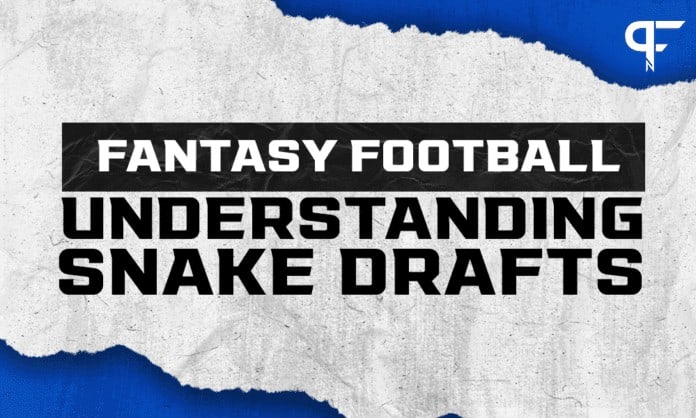Some fantasy football players are experienced veterans with years of experience under their belts. Each season, we see an influx of new and eager players stepping foot into the landscape for the first time. New players, however, might not know how many rounds are in a typical fantasy football draft or fully understand the premise of a snake draft. We aim to answer these questions and more to help get your fantasy football experience off on the right foot.
How many rounds are in a typical fantasy football draft?
I know you were hoping for a straightforward answer, but it all depends on the format you are playing. The style of the league you are in can make a massive difference in roster size.
Redraft leagues
For 95% of the fantasy players out there, redraft leagues are what we are accustomed to. They are almost always the first experience in the world of fantasy football.
These are formats that have a draft usually within a few weeks of the start of the regular season and run through the NFL season. This is a league where you have your team for a year, and that is it.
In general, redraft leagues have anywhere between 8 to 12 user teams and a typical roster format of a quarterback, two running backs, two wide receivers, a tight end, one flex splot (RB/WR/TE), a defense, and a kicker.
Like real NFL franchises, fantasy football teams have a bench where you can pick and choose which players you wish to have in your starting lineup. There are typically six bench spots, giving us a grand total of 15 players on our roster to fill out during the draft.
In general, 15 rounds is the usual amount in a fantasy football snake-style draft. The goal of a redraft league is to have teams with a talented roster but not completely deplete the waiver-wire pool, making in-season moves a critical aspect of a successful fantasy season.
Best Ball leagues
Here is where we see a significant deviation in the number of rounds in a fantasy football draft. In a best ball league, there are no in-season moves. Instead, the team you walk out of the draft with is the one you will have all season. While the roster construction might remain the same, this is a hands-off format, where the highest-scoring players in each position are automatically placed in your starting lineup each week.
In these leagues, benches are much deeper to counter the loss of mid-season acquisitions. Last season, in redraft leagues, if you drafted Christian McCaffrey, managers could have grabbed another RB off waivers to replace him. This is not an option in best ball, so fantasy managers load up on their bench trying to cover for potential injuries and draft their bye week fill-ins. The typical number of rounds jumps to 18 on sites like Underdog Fantasy.
Dynasty leagues
Up to this point, we have covered leagues that begin and end during a single NFL calendar season. A dynasty team, like the name implies, is a multi-year fantasy format.
Here, managers have their “startup” draft to select their team’s foundation for years to come. The length of these drafts can vary widely. There are typically 25 to 30 rounds on average, depending on how deep the commissioner wants rosters to be. This is because managers load their benches with guys who could be valuable assets down the road.
Understanding how a snake draft works
Now that you know what to expect in terms of rounds, how does a snake draft operate?
Once the initial draft order is established in a snake draft, the managers in the first slot make their selection. From there, it goes one by one until everyone has made their first pick. In contrast to the NFL Draft, where the team with the first pick would go again, the manager in the last slot would make the first pick of Round 2. The draft then “snakes” back to the manager who started it off. The pattern repeats this way until the draft is completed.
Using a 10-team league as an example, the 1.01 would select first, followed by the 1.02, and so on until the 1.10. The person who made the 1.10 pick would go back-to-back, starting the second round with the 2.01. As a result, the manager in the first slot would make the 2.10 and the 3.01, and the draft would continue in this pattern.
While it might seem like an advantageous strategy to have the first back-to-back picks, in general, the earlier you are in the draft, the higher the value of your overall team tends to be. This is why some leagues use what is called a third-round reversal (3RR) to distribute value across the league better.
With that said, any manager can win from any spot in a snake draft. It is who you pick, not just where you pick. The draft is just one component of a fantasy football team. Trophies are not handed out on draft day for a reason, as it takes savvy moves and roster decisions throughout the year before hardware is awarded.

